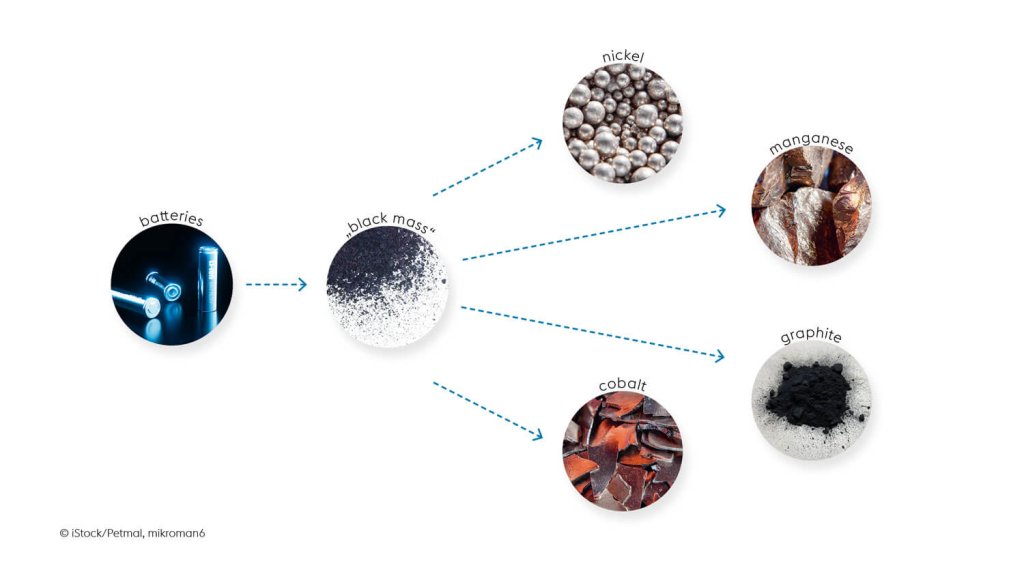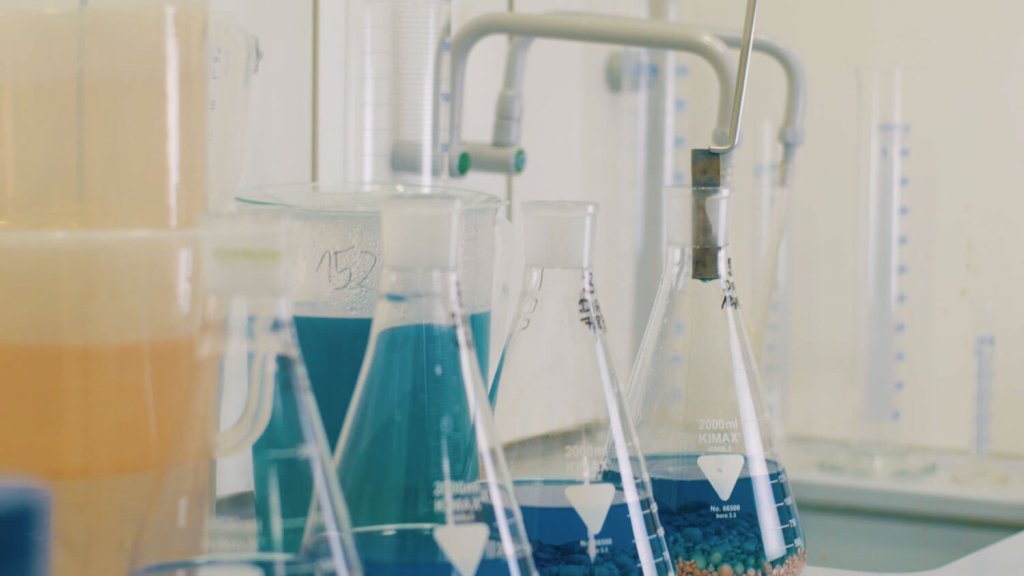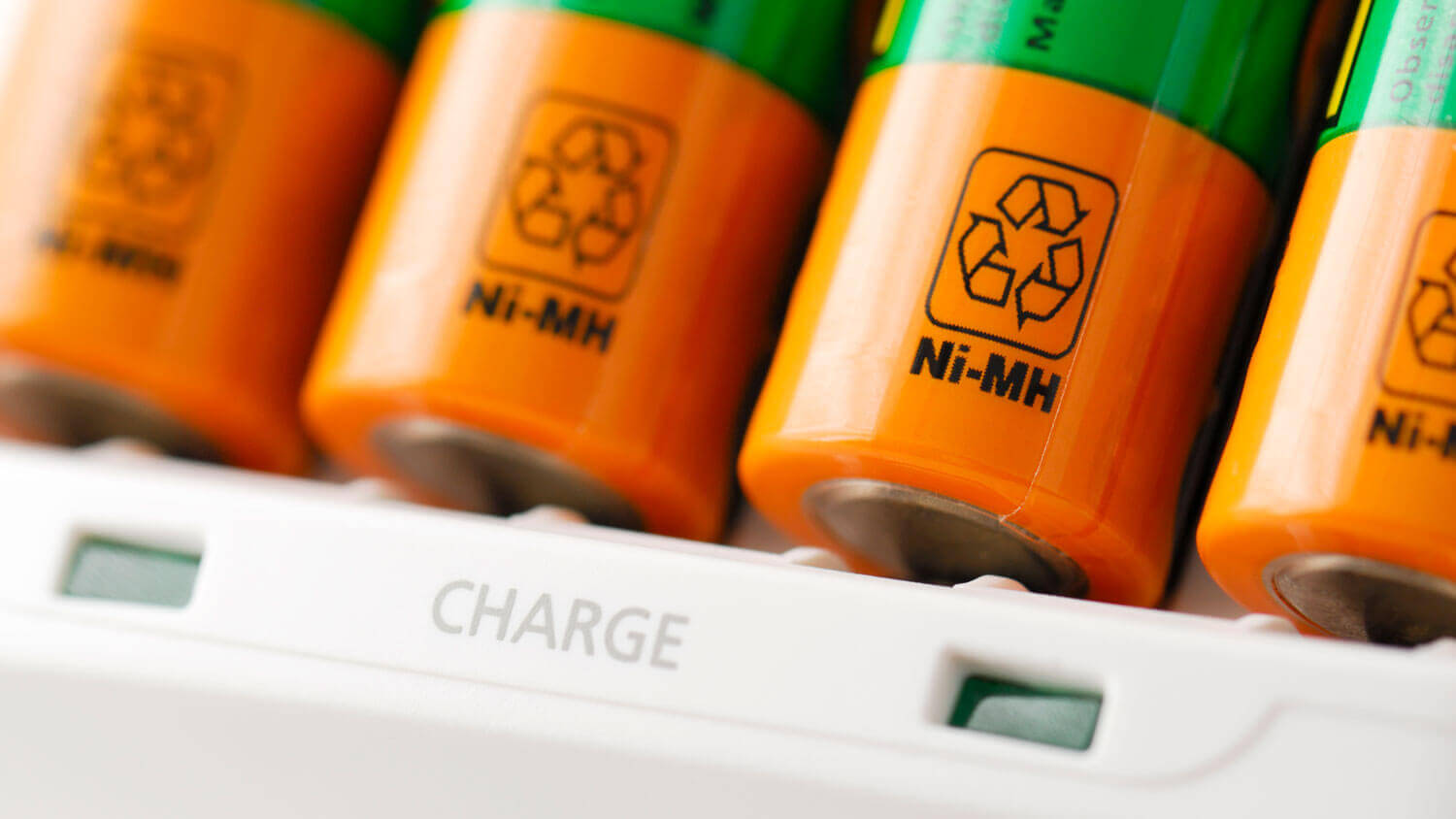Alternative raw material sources: The potential of batteries
In addition to steel scrap, alloy elements such as nickel, cobalt, manganese, and other alloys are essential components of our products. However, various global developments are affecting the availability of these critical raw materials. Within our sustainability framework inSPire, the High Performance Metals (HPM) Division is looking for long-term ways to keep these valuable elements in the product cycle, for example by recycling grinding sludge or batteries in order to be able to meet demand in the long term.
Social and legal changes have meant that e-mobility has become more important in recent years, and in turn, demand for e-cars, e-bikes, and other electric vehicles has risen. Additionally, electronic devices such as laptops, smartphones, and cameras have become an integral part of our everyday lives. All these products have one thing in common: They are powered by lithium-ion batteries (LIB) or nickel-metal hydride (NiMH) batteries. The production of the batteries requires valuable raw materials such as nickel, cobalt, manganese, and lithium. Expert projections show an immense increase in demand for these raw materials; demand for cobalt, for example, is predicted to increase fivefold by 2050.
As a result, an enormous amount of “waste” is projected to be produced by 2030: According to predictions, 86,000 metric tons of pure LIB will be disposed of annually.
SUSTAINABLE ADVANTAGES
The Circular Economy team sees this as a great opportunity for an alternative source of raw materials and is looking for ways to recycle batteries that can no longer be used for other purposes: We want to help improve raw material use and create opportunities to recycle material that can no longer be used to make new batteries.
Using secondary material has many benefits. As Josephine Müller, lead of inSPire’s Circular Economy team, explains, “Recycling batteries is a very complex topic that is being researched worldwide. We want to play a part in this by recycling residues from material processing that either cannot go back into battery production or would be too costly to process. In the long term, this will enable us to make an important contribution to the use and safeguarding of raw materials in Europe.”
The more raw materials we use from secondary sources, the less dependent we become on the raw materials market and material shortages. At the same time, we will also increase the recycling content of our products and reduce our carbon footprint.
We are conducting research in various areas of the circular economy. You can read more about this in previous articles:
- Recycling of by-products: “Waste” with added value
- Closing the loop with circular economy
- Circular Economy in the HPM Division: From waste to value
LIB RECYCLING AND THE HPM DIVISION
LIBs are not to be confused with the NiMH batteries commonly used in everyday life, which we are familiar with from remote controls and flashlights, for example. In contrast to these, LIBs are characterized by a higher energy density. Further advantages are the very low self-discharge (at room temperature) and lack of memory effect.
We receive used batteries from partners who cannot recycle or reuse them themselves. LIB recycling is being investigated in various research projects. The aim is to recover material for battery production. However, this is often either not possible at all or only possible at a very high cost. At the HPM Division, we see ourselves as a contact partner for alternative solutions and are examining the feasibility of using such recycling products in our steel production.
Four process types are used in research on LIB recycling:
- Pyrometallurgical processes, where heat is used.
- Hydrometallurgical processes, which rely on acids and other liquids.
- A combination of the two processes above.
- Direct recycling, where the used LIBs are pretreated (e.g., thermally or via shredding), discharged, and hazardous gases escape.
A WIDE RANGE OF POSSIBILITIES
The topic of battery recycling shows the wealth of possibilities and the great potential of this alternative source of raw materials. That is why research is being conducted on three subtopics here at HPM. The projects pursue the common goal of tapping into batteries as a source of secondary raw materials in a sustainable way and getting the most out of them. Therefore, optimizing recycling processes, especially concerning the needs of the steel industry, is our top priority.
In identifying the best recycling option, we involve the entire chain, starting with selecting the material to be recycled: This can either be used batteries, or production waste generated during the manufacture of the batteries. Subsequently, there are also different options in terms of use: The recovered resources can either be integrated internally into the production processes or sold to external interested parties.
THREE FOCUS PROJECTS
We are currently working intensively on three specific projects related to the different recycling options:
- Nickel-metal hydride batteries: At Buderus Edelstahl, trials are being carried out with nickel concentrate from typical household batteries to test their technical and economic applicability.
- Graphite recycling: A major project called “FuLiBatteR” looks at the requirements and feasibility of graphite recycling from LIB, among other things. More on this below.
- Black mass of LIB: This research strand deals with the main product in battery recycling—the black mass. This is a sand-like mass that contains the different metals of the battery mixed together. In the future, our goal is to reuse not just individual elements but the entire mass along with its metallic ingredients, including graphite.

uLiBatteR: PARTNERSHIP FOR INNOVATIVE RECYCLING METHODS
Together with our committed partners, we are driving forward our sustainability initiatives. Under the umbrella of FuLiBatteR (“Future Lithium Ion Battery Recycling for Recovery of Critical Materials”), we are working with K1-MET and other industry partners to develop innovative solutions to improve battery recycling. The project is composed of three different focus projects:
- The first project, “Waste management and waste engineering approaches for LIB recycling,” focuses on the recycling of graphite from LIB batteries. For this purpose, the method of froth flotation is used, which allows the graphite to be separated from the other elements.
- The second project, “Pyrometallurgical processing of LIB and black mass,” focuses on black mass. The aim is to recover valuable metals such as nickel, cobalt, and manganese contained in the mass, and to make them reusable.
- The third project, “Biohydrometallurgical treatment of LIB residues,” also deals with the extraction or recovery of elements from LIB, but using biohydrometallurgy. This approach uses more energy-efficient microorganisms to improve recycling.
We are very pleased to be part of such research initiatives and to work with other organizations to advance not only LIB recycling, but also many other innovative developments in the industry. Here you will find an overview of our diverse partner network we are working with to put our sustainability plans into action.

USING ALTERNATIVE RAW MATERIAL SOURCES SUCCESSFULLY
The growing demand for LIB creates an increased need for the metals processed in it on the one hand, and on the other hand, offers new opportunities for recycling and use as an alternative source of raw materials. Other materials and wastes also play an important role for us in the further development of a circular economy. We have reported here how we use grinding waste such as chips, scrap and other by-products as raw material sources and keep them in the product cycle.
Our Circular Economy Team takes advantage of these opportunities and works together with partners on the further development of recycling methods. In this way, we conserve resources and move another step closer to a circular economy system.
In addition to Circular Economy, various areas of sustainability within the HPM Division are united under our sustainability framework inSPire. In our next topic focus, you will learn everything about Climate Impact—the team, the projects, our goals, and new developments.
